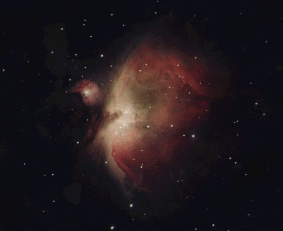


IFI 5
Responsables
Monique THONNAT,
François BREMOND,
ORION, INRIA Sophia-Antipolis, France.
Visualisation de comportements humains pour l'interprétation automatique de séquences vidéos
   |
VU Van Thinh,
IFI 5 Responsables
|
Key words :
Interpretation of video sequences, Simulation, 3D animation, 3D
visualization,
3D graphic, Modeling of human body and of the human behaviors, Modeling
of scenarios and of scenes, Automatic calibration.
Résumé :
Ce stage a pour objectif d'étudier le problème de la
simulation pour l'interprétation de séquences d'images.
Il
s'agit de concevoir un système de visualisation
générant
des animations 3D à partir des comportements reconnus par un
système
d'interprétation automatique ou à partir de comportements
décrits par un expert. Dans le cadre de notre stage nous avons
utilisé
le logiciel de reconnaissance de comportements à partir de
séquences
vidéos VSIS (Video Surveillance Intelligent System). La
visualisation
des comportements doit permettre de tester et de valider
l'interprétation.
L'objectif du système de visualisation est à la fois
(1) de rendre compte des calculs de l'interprétation, (2)
d'être
suffisamment flexible et paramétrable pour tester
différentes
configurations du système d'interprétation et (3)
d'être
suffisamment réaliste pour comprendre les scénarios
évoluant
dans la scène.
Nous résolvons ce problème en proposant un modèle
hiérarchique et articulé comme modèle
générique
du corps humain. Nous proposons également deux autres
modèles
hiérarchiques comme modèle générique de
comportements
et de scénarios, et un modèle générique de
scènes rassemblant tous les modèles
précédents.
Nous proposons également un langage de description pour
représenter
ces modèles.
Les résultats déjà obtenus sont prometteurs :
nous avons déjà pu visualiser les sorties de VSIS,
visualiser
les scénarios décrits par un expert et vérifier
que
les animations générées sont cohérentes
avec
VSIS.
Abstract :
The objective of this work is for studying the problem of the
simulation
for automatic video interpretation. We have conceived a visualization
system
that generates the 3D animations from the recognition of behaviors (by
an automatic interpretation system) or from the description of
behaviors
(by an expert). In our work, we used the software for automatic video
interpretation
VSIS (Video Surveillance Intelligent System). The visualization of
behaviors
has to permit to test and to validate the interpretation process.
The objective of our visualization system is (1) to visualize the
computation
of the interpretation, (2) to be flexible enough and parameterable for
testing the different configurations of the interpretation system et
(3)
to be realist enough to understand what is going on in the scene.
We solve this problem by proposing an articulated and hierarchical
model for the generic model of the human body. We also propose two
other
hierarchical models for generic model of behaviors and of scenarios,
and
a generic model of scenes that gathers all previous models. We also
propose
a description language for representing these models.
The obtained results are promising : we could visualize the output
of VSIS, visualize the described scenarios (by an expert) and verify
that
the generated animations are coherent with VSIS.